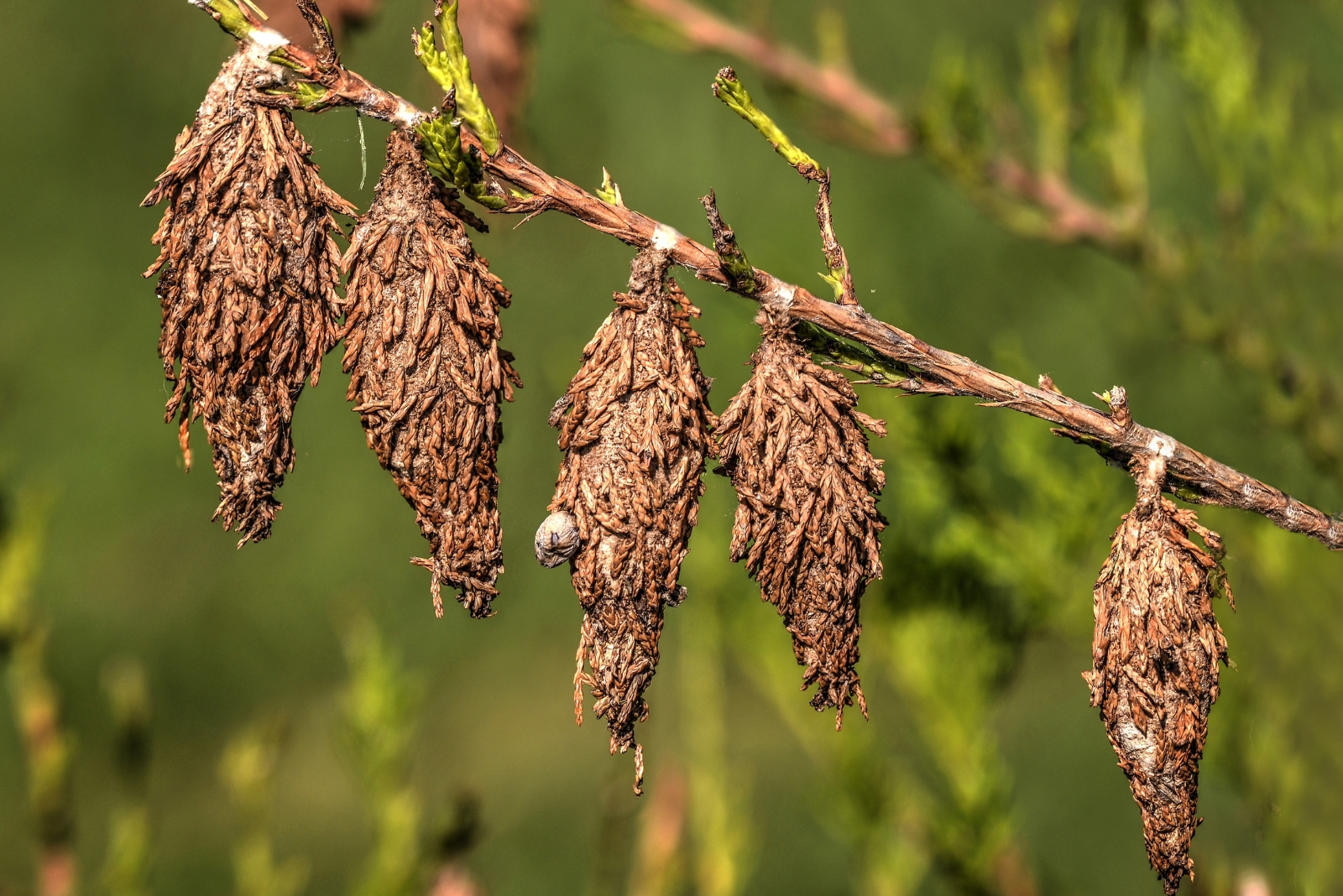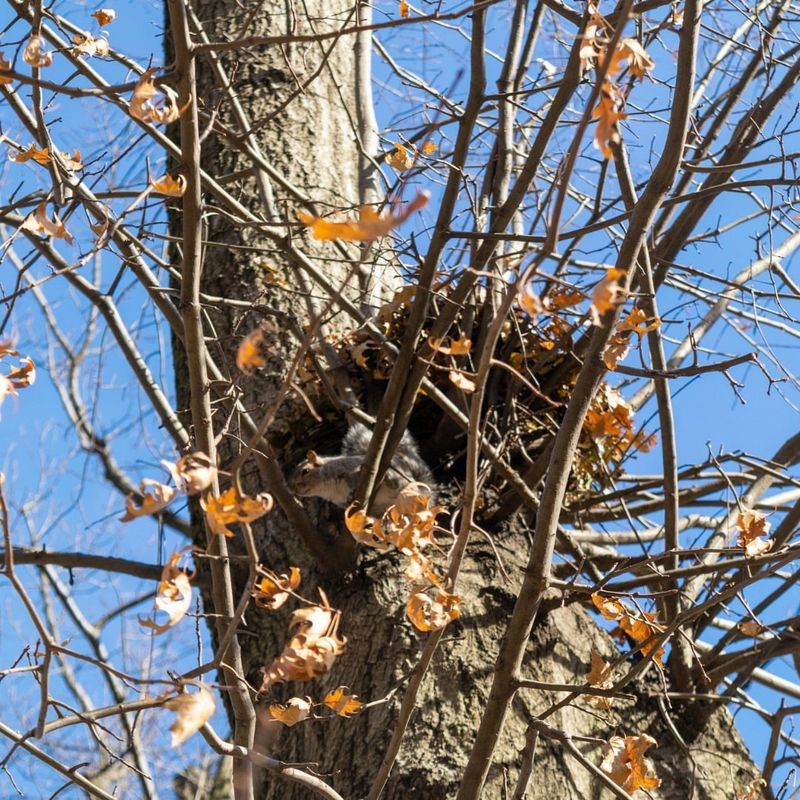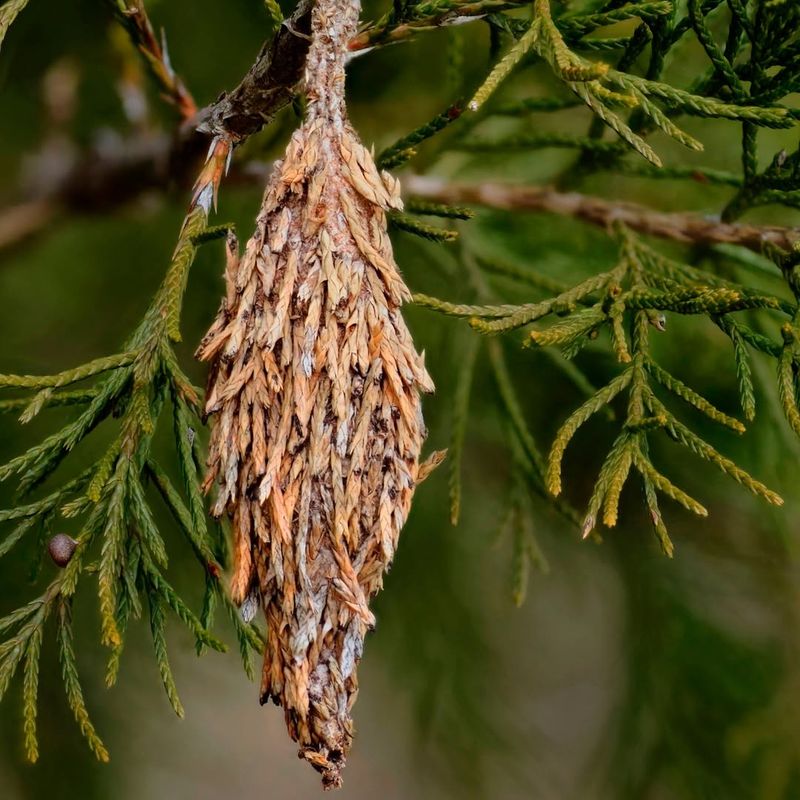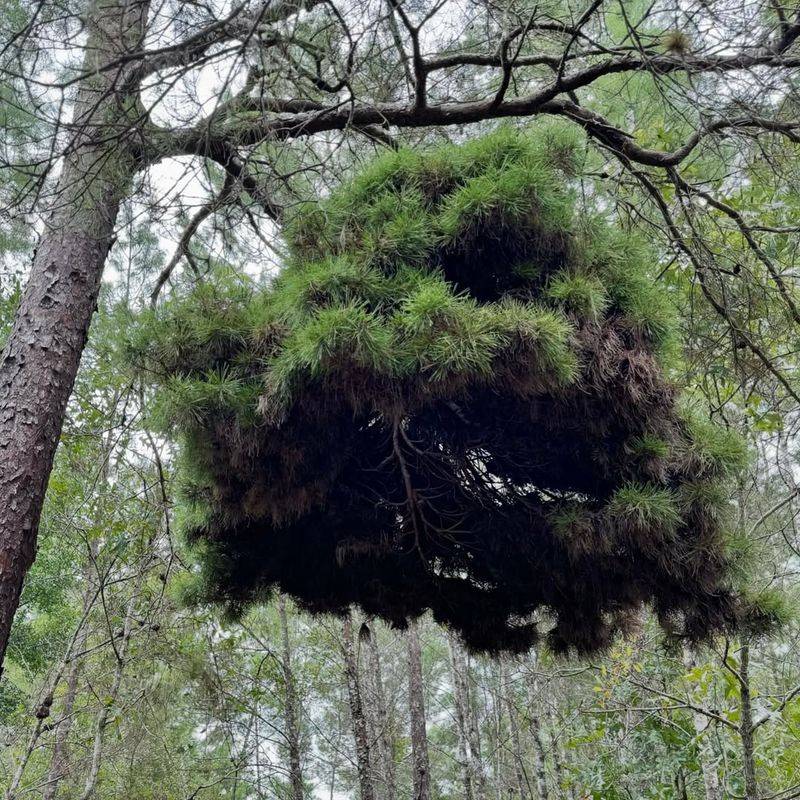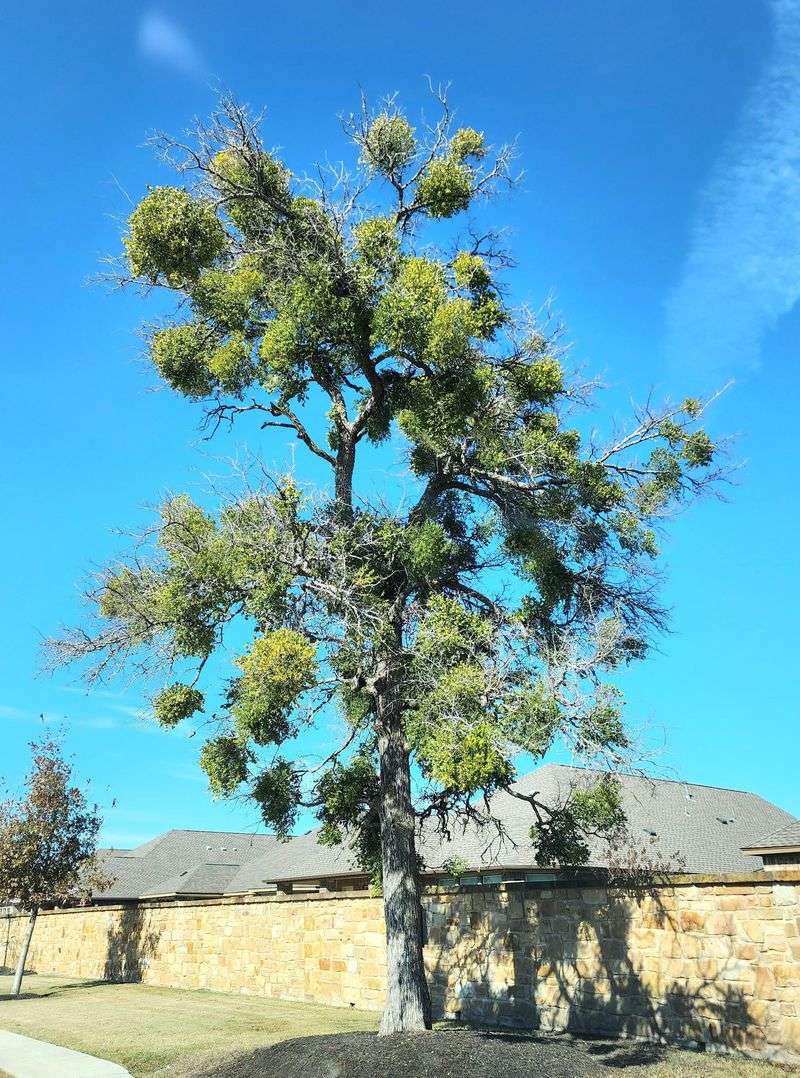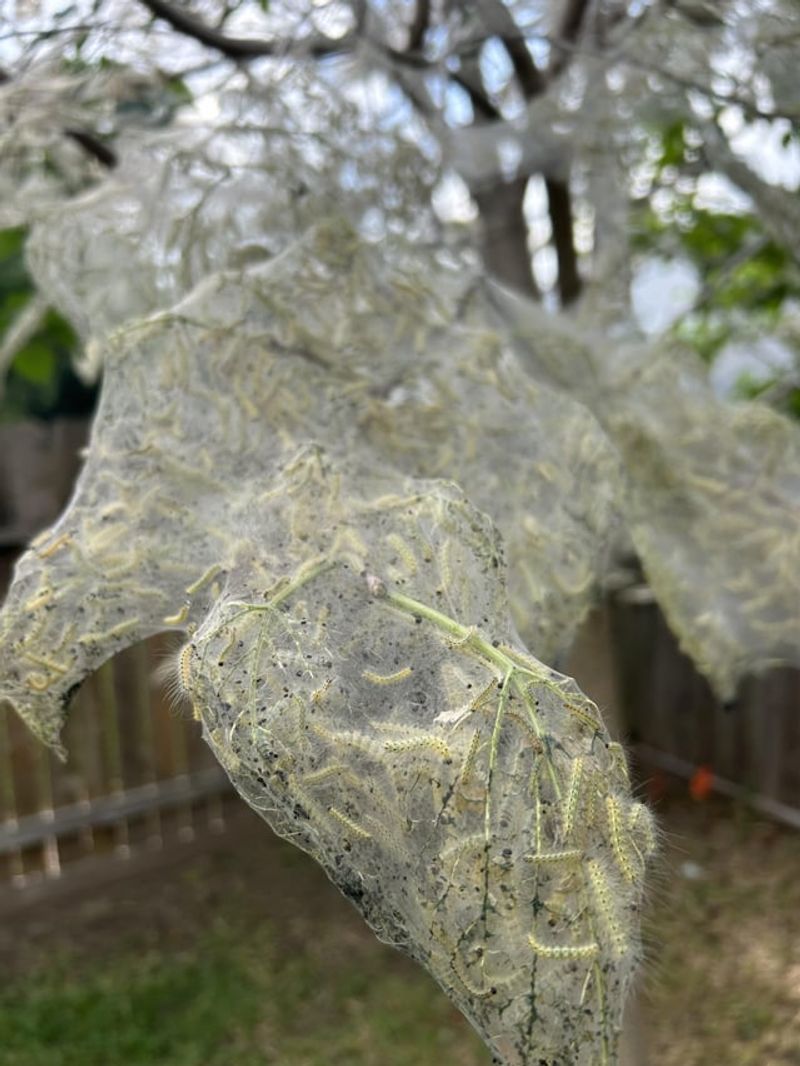That strange leaf ball hanging in a Nebraska tree can look like a nest at first glance, but it often turns out to be something completely different. I remember the first time I spotted one and felt so confused.
Once you know what causes it, the whole thing makes way more sense. Here’s the real reason it shows up in your branches.
1. Squirrel Dreys Are Winter Hideaways
Squirrels build amazing homes called dreys that look exactly like messy leaf clumps wedged between branches. These clever rodents weave together leaves, twigs, and bark to create waterproof shelters that keep them warm during harsh Nebraska winters.
Unlike bird nests, dreys are much larger and bulkier, often measuring two feet across. Squirrels typically place them in tree forks or against the trunk for extra stability.
If you watch closely during fall in Nebraska, you might spot squirrels busily gathering materials and constructing their leafy fortresses before the cold arrives.
2. Bagworms Create Protective Cocoons
Bagworms are caterpillars that construct portable cases from silk, leaves, and twigs while they feed on tree foliage. These spindle-shaped structures dangle from branches and can easily be mistaken for small leaf clusters.
Throughout Nebraska, these pests damage evergreens and deciduous trees by stripping away needles and leaves. Each bagworm lives inside its protective case, only poking its head out to munch on your tree.
When you spot multiple cone-shaped leaf bags hanging together, you’re looking at a bagworm infestation that needs attention before serious damage occurs.
3. Witches’ Brooms Are Abnormal Growth
Sometimes trees develop weird growths called witches’ brooms that resemble massive balls of tangled branches and leaves. Fungi, viruses, mites, or genetic mutations trigger this unusual clustering where dozens of small shoots grow from one spot.
Nebraska trees affected by this condition produce dense, bushy masses that persist year-round, unlike temporary nests. The deformed branches grow in all directions, creating a rounded shape that catches your eye immediately.
While witches’ brooms look alarming, they rarely threaten the entire tree’s health, just that particular branch section.
4. Oak Apple Galls House Wasp Larvae
Tiny wasps inject chemicals into oak tree tissue, causing the tree to form round growths called oak apple galls. These bizarre structures provide food and shelter for developing wasp larvae inside.
Around Nebraska’s oak trees, you’ll find these papery or spongy balls ranging from marble-sized to tennis ball-sized. They start green in spring and turn brown by fall, often staying attached through winter.
When you cut one open, you’ll discover hollow chambers where wasp babies grew, definitely not the cozy nest you imagined from the outside.
5. Leaf Clumps From Storm Debris
Strong Nebraska winds frequently blow leaves and small branches into tree forks, where they pile up and stick together. Rain and morning dew help these random collections of debris mat down into compact balls that resemble intentional structures.
Unlike actual nests, storm debris contains no interwoven pattern or structural design. You’ll notice dead, brown leaves mixed with random sticks rather than carefully arranged materials.
After particularly windy seasons in Nebraska, dozens of these accidental leaf clumps appear throughout neighborhoods, confusing homeowners who think wildlife moved in overnight.
6. Mistletoe Bunches Are Parasitic Plants
Mistletoe grows directly on tree branches, sending roots into the wood to steal water and nutrients. This parasitic plant forms thick, evergreen clumps that stay green year-round, even when Nebraska trees lose their leaves.
From the ground, mistletoe bunches look like leafy balls wedged high in branches. Birds spread mistletoe by eating the sticky berries and wiping seeds onto other trees.
While romantic at Christmas, mistletoe weakens trees over time by draining resources, so those mysterious green balls actually signal a health problem for Nebraska’s trees.
7. Tent Caterpillar Webbing Traps Leaves
Tent caterpillars spin massive silk webs in tree crotches where branches meet, and dead leaves get trapped in the sticky strands. What starts as delicate webbing quickly becomes a bulky mass when wind blows debris into it.
Nebraska experiences tent caterpillar outbreaks every few years, especially affecting fruit and ornamental trees. The caterpillars live communally inside the web, venturing out to feed on leaves.
When you see silky strands mixed with brown, crumpled leaves, you’re looking at caterpillar architecture, not a bird’s carefully constructed home for raising babies.

